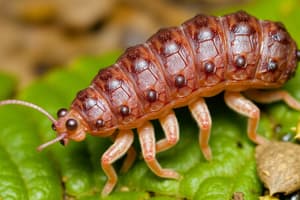Podcast
Questions and Answers
What is the primary reason for increased competition among organisms in a population?
What is the primary reason for increased competition among organisms in a population?
- Increased predation rates
- Depletion of available resources (correct)
- Parasitism and disease
- Shortages of nesting sites
What is the term for the interaction between two different organisms in which one captures and feeds on the other?
What is the term for the interaction between two different organisms in which one captures and feeds on the other?
- Competition
- Mutualism
- Predation (correct)
- Parasitism
What happens to the predator population when the prey population increases?
What happens to the predator population when the prey population increases?
- It becomes extinct
- It decreases
- It increases (correct)
- It remains constant
What is the effect of parasitism and disease on a population?
What is the effect of parasitism and disease on a population?
What is the result of increased competition for resources in a population?
What is the result of increased competition for resources in a population?
What does the steep drop near the end of the Type I Survivorship Curve indicate?
What does the steep drop near the end of the Type I Survivorship Curve indicate?
Which type of reproduction involves producing a few offspring each year for several years?
Which type of reproduction involves producing a few offspring each year for several years?
What is the life history of an organism a description of?
What is the life history of an organism a description of?
What is an example of an organism that exhibits Type III Survivorship Curve?
What is an example of an organism that exhibits Type III Survivorship Curve?
What is the characteristic of Type II Survivorship Curve?
What is the characteristic of Type II Survivorship Curve?
What might happen when a population exceeds the carrying capacity of its environment?
What might happen when a population exceeds the carrying capacity of its environment?
What is the carrying capacity of an environment?
What is the carrying capacity of an environment?
What happens to the population size when it exceeds the carrying capacity?
What happens to the population size when it exceeds the carrying capacity?
What is the shape of the graph of logistic growth?
What is the shape of the graph of logistic growth?
What happens to the population growth when it reaches the carrying capacity?
What happens to the population growth when it reaches the carrying capacity?
What type of relationship is similar to parasitism?
What type of relationship is similar to parasitism?
What is the main advantage of having a territory?
What is the main advantage of having a territory?
What happens to a population in response to density-independent factors?
What happens to a population in response to density-independent factors?
What is an example of a density-independent factor?
What is an example of a density-independent factor?
What is the effect of a parasite on its host?
What is the effect of a parasite on its host?
What is the consequence if all the resources are used up during reproduction?
What is the consequence if all the resources are used up during reproduction?
What is the term for the movement of individuals into and out of a population?
What is the term for the movement of individuals into and out of a population?
What happens to the population size if the death rate is greater than the birthrate?
What happens to the population size if the death rate is greater than the birthrate?
What are the three factors that can greatly increase or decrease the size of a population?
What are the three factors that can greatly increase or decrease the size of a population?
What is the result if the birthrate is equal to the death rate in a population?
What is the result if the birthrate is equal to the death rate in a population?
What is the primary factor affecting the birth rate in a population?
What is the primary factor affecting the birth rate in a population?
What type of survivorship curve is characterized by a high death rate in the early stages of life?
What type of survivorship curve is characterized by a high death rate in the early stages of life?
Which of the following factors does not directly affect population growth?
Which of the following factors does not directly affect population growth?
What is the primary purpose of age-structure diagrams?
What is the primary purpose of age-structure diagrams?
What is the term for the study of the distribution of individuals among different ages in a population?
What is the term for the study of the distribution of individuals among different ages in a population?
What happens to the growth rate of a population as it reaches the carrying capacity?
What happens to the growth rate of a population as it reaches the carrying capacity?
What is an assumption made by both the exponential and logistic models?
What is an assumption made by both the exponential and logistic models?
What is the effect of a drought on the carrying capacity of a prairie ecosystem?
What is the effect of a drought on the carrying capacity of a prairie ecosystem?
What are the exponential and logistic models used for in population study?
What are the exponential and logistic models used for in population study?
What is an example of a density-independent limiting factor?
What is an example of a density-independent limiting factor?
What is the term for a factor that causes population growth to decrease?
What is the term for a factor that causes population growth to decrease?
What happens to the limiting factor when the population density reaches a certain level?
What happens to the limiting factor when the population density reaches a certain level?
What is the definition of population density?
What is the definition of population density?
What is an example of a limiting factor that affects population growth?
What is an example of a limiting factor that affects population growth?
Why do populations have limits to their growth?
Why do populations have limits to their growth?
Flashcards are hidden until you start studying
Study Notes
Population Dynamics
- Population growth is controlled by two types of factors: density-dependent and density-independent factors.
- Density-dependent factors include:
- Competition for resources such as food, water, sunlight, and space
- Predation: the interaction between two different organisms where one captures and feeds on the other
- Parasitism and disease: the interaction between two organisms where one feeds on the other, often weakening the host
- Shortages of food, water, and nesting sites
- Density-dependent factors affect population growth as the population size increases, leading to competition for resources and increased predation, parasitism, and disease.
Predator-Prey Relationship
- The predator-prey relationship is a key density-dependent factor that controls population size.
- As the prey population increases, the predator population also increases, leading to a decrease in the prey population.
- As the prey population decreases, the predator population also decreases due to lack of food.
Parasitism and Disease
- Parasitism is a type of density-dependent factor where one organism feeds on another, often weakening the host.
- Disease can also affect population growth, especially as the population density increases.
Life History Traits
- Life history traits refer to the characteristics that affect an organism's schedule of reproduction and survival.
- There are two types of reproduction:
- Big-bang reproduction: an organism produces all of its offspring in a single event.
- Repeated reproduction: an organism produces a few offspring each year for several years.
- The type of reproduction an organism uses depends on its life history traits, such as the survival rate of its offspring.
Carrying Capacity
- The carrying capacity is the number of individuals the environment can support over a long period of time.
- As the population grows, it may exceed the carrying capacity, leading to a decrease in population size due to the lack of resources.
- Logistic growth is a model of population growth that takes into account the carrying capacity of the environment.
Logistic Growth
- Logistic growth is a model of population growth that slows down as the population approaches the carrying capacity.
- The graph of logistic growth looks like a stretched out "S" shape.
- When the population is at the carrying capacity, the birth rate equals the death rate, and growth stops.
Density-Independent Factors
- Density-independent factors affect all populations in similar ways, regardless of the size of the population.
- Examples of density-independent factors include:
- Unusual weather or natural disasters
- Human activities such as deforestation or damming of a river
- These factors can cause a population to crash or decline suddenly.
Population Growth Rate
- The population growth rate is the amount by which a population's size changes in a given time.
- If the birth rate is greater than the death rate, the population will increase.
- If the birth rate is equal to the death rate, the population will remain stable.
- If the death rate is greater than the birth rate, the population will decrease.
Migration
- Migration is the movement of individuals into and out of a population.
- It can affect population growth rate and size.
Age Structure
- Age structure refers to the distribution of individuals among different ages in a population.
- The age structure of a population can affect its growth rate and size.
- Age-structure diagrams are used to predict the future growth of a population.
Studying That Suits You
Use AI to generate personalized quizzes and flashcards to suit your learning preferences.




